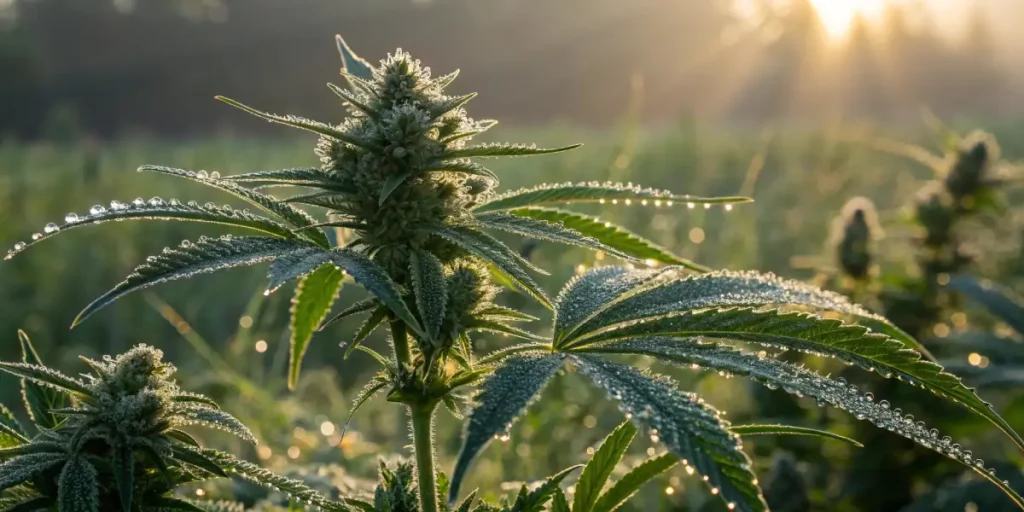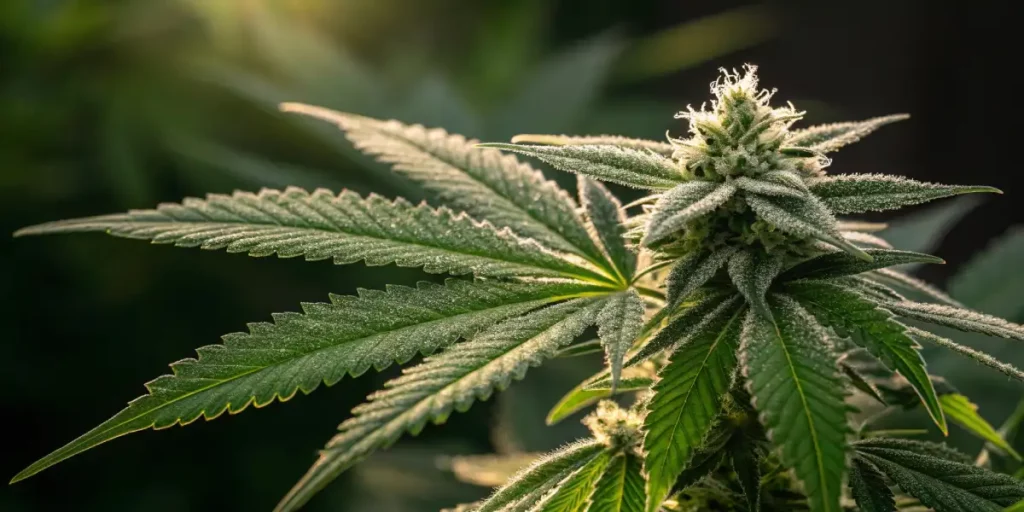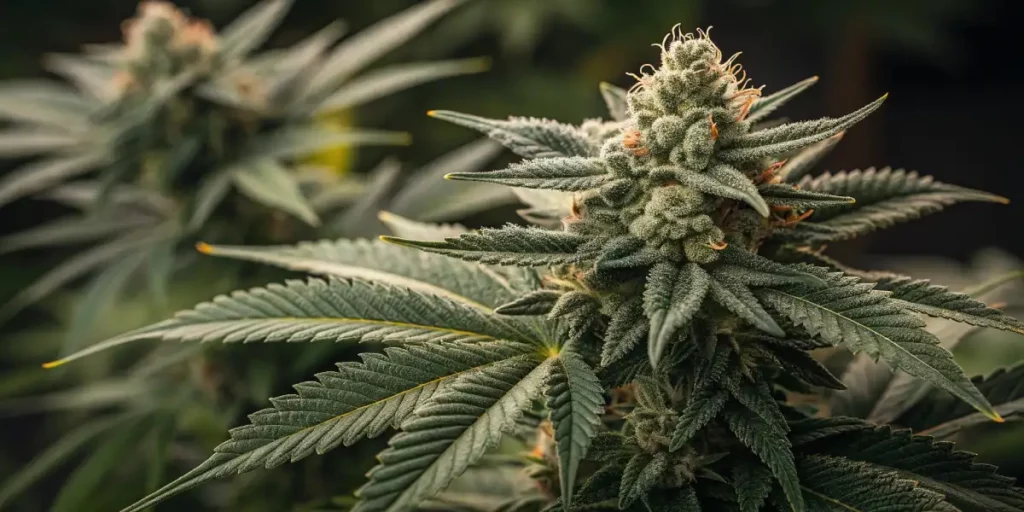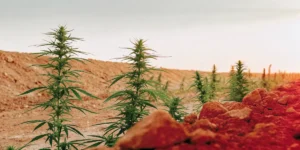Marijuana trichomes are tiny, crystal-like structures that coat the surface of cannabis plants. These small, hair-like outgrowths are not just for show; they play a crucial role in the plant’s defense mechanisms and potency. They contain a treasure trove of cannabinoids and terpenes, the compounds responsible for the plant’s effects and aroma.
For any cannabis enthusiast, whether you’re buying seeds for the first time or you’re a seasoned grower, knowing marijuana trichomes can enhance your cultivation journey. Trichomes act as a protective barrier against pests and environmental stressors, making them vital for healthy plant growth. The presence of trichomes is often an indicator of the plant’s potency and potential yield.
When growing cannabis, the goal is often to maximize trichome production. More trichomes mean more cannabinoids, which translates to greater potency. Strains like White Widow, available on Global Green Genetics, are renowned for their abundant trichome production, making them a favorite among growers aiming for high-potency harvests.
Types of Cannabis Trichomes
There are several types of cannabis trichomes, each with distinct characteristics. The most common types include bulbous, capitate-sessile, and capitate-stalked trichomes. Bulbous trichomes are the smallest, barely visible to the naked eye, whereas capitate-stalked trichomes are the largest and most abundant on mature buds.
Capitate-stalked trichomes are the primary producers of cannabinoids and terpenes. These trichomes consist of a stalk and a gland head, where the magic happens. Knowing the differences between cannabis trichomes types can help growers focus on cultivating strains that maximize potency, like the robust Northern Lights from Global Green Genetics.
Besides to their structural differences, each type of trichome contributes differently to the plant’s overall chemistry. Bulbous trichomes, though small, add to the richness of cannabinoids but are less significant than their larger counterparts. Capitate-sessile trichomes, being slightly larger, also play a role in the plant’s defense, though not as prominently in cannabinoid production.
By recognizing these differences between cannabis trichomes types, growers can better tailor their cultivation practices. This knowledge allows for the selection of strains and growing techniques that enhance trichome production, ultimately influencing the quality and potency of the harvest. Focusing on the right trichome types may also lead to innovations in breeding new, more potent strains.
Enhancing Trichome Production
To increase trichome production, growers often look for specific techniques and environmental adjustments. One effective strategy is to control the temperature and humidity levels. Cooler temperatures, especially during the flowering stage, can stimulate more trichome development. Maintaining optimal conditions is key to achieving a frosty, resinous crop.
Nutrient balance also plays a significant role in trichome production. Providing plants with the right nutrients at each growth stage ensures they have the energy and resources needed to produce abundant trichomes. Strains like Blue Dream, available at Global Green Genetics, benefit from precise nutrient management to reach their full trichome potential.
Knowing how to enhance trichome production in cannabis involves more than just environmental control. Light exposure, particularly the spectrum and intensity, can significantly impact trichome density. Many growers find that using full-spectrum LED lights encourages better trichome development compared to traditional lighting methods.
Moreover, stress techniques like low-stress training (LST) can be employed to manipulate plant growth naturally, encouraging more vigorous trichome production. These methods, combined with a deep knowing of the plant’s life cycle, allow growers to optimize their yields, ensuring that each cannabis plant reaches its trichome-producing potential.

The Effects of Temperature on Marijuana Trichomes
Temperature fluctuations can greatly impact marijuana trichomes. Extremely high temperatures may cause trichomes to degrade, reducing the overall potency of the harvest. Conversely, cooler temperatures can encourage trichome growth, leading to a more potent product. Keeping a stable, cool environment during the flowering stage is crucial for preserving trichome integrity.
Growers often use techniques like adjusting light intensity and airflow to regulate temperature within grow rooms. This control helps maintain the delicate balance required for optimal trichome production. Proper temperature management is especially important for strains like White Widow, known for their trichome-rich buds.
The effects of temperature on trichome development highlight the importance of careful environmental monitoring. Rapid changes in temperature can shock the plants, potentially hindering resin production and affecting the overall yield. Consistent, moderate temperatures are ideal for fostering optimal results.
Additionally, knowing how temperature influences trichome growth can aid in the selection of strains suited to different growing environments. Some varieties may thrive in cooler climates, naturally producing more resin, while others might require more controlled indoor conditions to achieve similar potency and yield.
Best Way to Preserve Marijuana Trichomes
Preserving trichomes after harvest is essential for maintaining the quality and potency of cannabis. The best way to preserve marijuana trichomes is through proper drying and curing processes. When done correctly, these methods retain the cannabinoids and terpenes within the trichomes, ensuring a high-quality product.
Start by drying the harvested buds in a cool, dark place with good airflow. This process should be slow, taking about 7-14 days, to prevent trichomes from becoming brittle and breaking off. Once dried, curing involves placing the buds in airtight jars, opening them periodically to release moisture. This process can take several weeks but is crucial for preserving the integrity of the trichomes.
Knowing the best way to preserve cannabis quality also involves ongoing storage conditions. Beyond curing, keeping the product in stable, low-humidity environments prevents mold and degradation. Using humidity control packs in storage containers can help maintain ideal conditions.
Furthermore, proper preservation includes minimizing exposure to light and heat, which can degrade the sensitive compounds in cannabis. For long-term storage, refrigeration or freezing can be considered, though these methods require careful implementation to avoid damaging the resin glands.
Importance of Trichomes in Marijuana Potency
The potency of marijuana is largely determined by the concentration of cannabinoids and terpenes within the trichomes. These compounds are responsible for the psychoactive and therapeutic effects of cannabis. Therefore, the more trichomes a plant has, the more potent it is likely to be.
Growers often select strains with known high trichome production to ensure a potent harvest. For instance, Northern Lights is a strain celebrated for its dense trichome coverage and high THC content. By focusing on trichome-rich strains, growers can produce cannabis that meets the demands of both recreational and medicinal users.
Recognizing the importance of trichomes in marijuana potency helps guide breeding and selection practices. By prioritizing strains with a proven track record of high trichome production, growers can meet consumer demand for high-potency products. This focus on trichomes also encourages innovation in cultivation techniques.
Besides, knowing the importance of trichomes in marijuana potency aids in the development of targeted cannabis products. By isolating specific cannabinoids and terpenes within the trichomes, producers can create strains and products tailored for specific therapeutic or recreational effects, enhancing the cannabis experience for users.

FAQs of marijuana trichomes
What are marijuana trichomes?
Marijuana trichomes are small, hair-like structures on the surface of cannabis plants. They contain the plant’s cannabinoids and terpenes, which are the active compounds responsible for marijuana’s effects. Trichomes serve as a protective mechanism for the plant, warding off pests and environmental stress.
These structures are essential for determining the potency of cannabis. The density and size of trichomes on a plant can indicate its strength and therapeutic potential. For growers, maximizing trichome production is a key goal to achieve a high-quality yield.
Knowing how cannabis produces its active compounds is also crucial for consumers who seek specific effects. The concentration and composition of cannabinoids and terpenes can vary significantly between strains, affecting the overall experience and benefits.
For those new to cannabis cultivation, learning about these plant structures can provide insight into the lifecycle and environmental interactions of cannabis. This knowledge is invaluable for anyone looking to delve deeper into the world of cannabis, whether for personal use or commercial cultivation.
How do I enhance trichome production in cannabis?
Enhancing trichome production involves optimizing growing conditions such as temperature, humidity, and nutrients. Cooler temperatures during the flowering stage can encourage more trichome development. Proper nutrient management ensures the plant has the resources needed for trichome production.
Strains like Blue Dream can benefit from these optimized conditions, resulting in a more potent and resinous crop. Additionally, using LED lights can help maintain a cooler environment, further promoting trichome growth.
To further enhance trichome production, growers may experiment with stress induction techniques such as controlled drought or light manipulation, which can trigger defense mechanisms in the plant, leading to increased trichome formation. These methods require careful application to avoid harming the plant.
Networking with other growers and staying updated on new research and techniques can also provide valuable insights into how to enhance trichome production in cannabis. Sharing experiences and strategies can lead to improved cultivation practices and higher-quality yields.
What are the differences between cannabis trichomes types?
Cannabis trichomes come in various types, including bulbous, capitate-sessile, and capitate-stalked trichomes. Bulbous trichomes are the smallest, while capitate-stalked trichomes are the largest and most significant for cannabinoid production.
Capitate-stalked trichomes are particularly important because they contain the highest concentrations of cannabinoids and terpenes. Knowing these differences helps growers focus on strains that maximize trichome production for higher potency.
These differences between cannabis trichomes types are not merely structural but also functional. Each type of trichome contributes uniquely to the plant’s defense and potency, with capitate-stalked trichomes being the powerhouse for cannabinoid synthesis.
Gaining insight into these differences can guide breeders in developing strains with specific characteristics, whether for increased resin production or enhanced aroma and flavor profiles. This knowledge is crucial for advancing both the quality and diversity of cannabis products available on the market.
How can temperature affect marijuana trichomes?
Temperature plays a critical role in the health and development of marijuana trichomes. High temperatures can cause trichomes to degrade, reducing the plant’s potency. Cooler temperatures, on the other hand, encourage trichome growth and preservation.
Maintaining a consistent, cool environment is essential, especially during the flowering stage. Techniques like adjusting light intensity and airflow can help regulate temperature, ensuring optimal trichome production and quality.
Beyond ambient temperature control, the timing of temperature changes can also affect trichome development. Gradual cooling towards the end of the flowering stage can mimic natural seasonal changes, encouraging cannabis plants to produce more trichomes as a protective measure.
Understanding how temperature affects marijuana trichomes can also help in the planning and construction of grow facilities. Designing spaces that can easily adapt to temperature changes ensures that plants remain in ideal conditions, maximizing trichome production and overall plant health.
What is the best way to preserve marijuana trichomes?
The best way to preserve marijuana trichomes is through careful drying and curing. These processes help retain the cannabinoids and terpenes within the trichomes, ensuring a potent final product. Drying should be done slowly in a cool, dark place with good airflow.
After drying, curing in airtight jars allows the buds to mature and develop their full flavor and potency. Proper storage, away from light and heat, is also crucial to preserve trichome integrity over time.
Additionally, the best way to preserve marijuana trichomes includes regular monitoring of storage conditions. Checking for changes in humidity or temperature can prevent degradation and maintain the quality of the cannabis over months or even years.
For those storing cannabis long-term, vacuum sealing can provide an extra layer of protection against oxygen exposure, which can degrade trichomes. Incorporating these preservation techniques ensures that the cannabis retains its desired potency and flavor whenever it is used.





